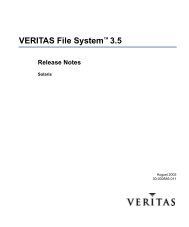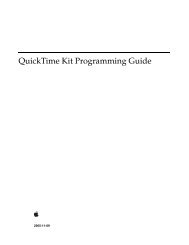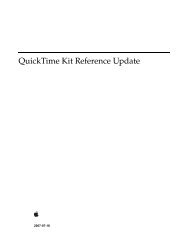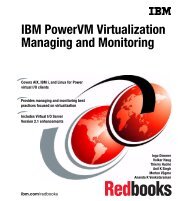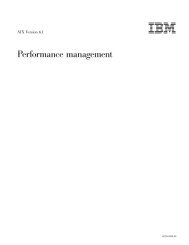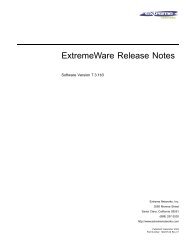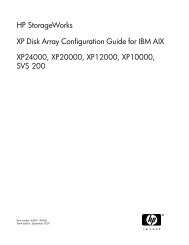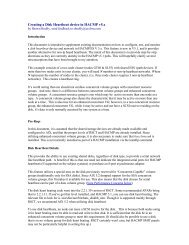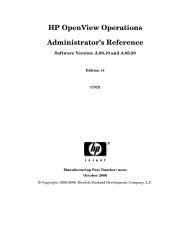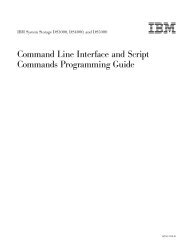HP-UX VxFS tuning and performance - filibeto.org
HP-UX VxFS tuning and performance - filibeto.org
HP-UX VxFS tuning and performance - filibeto.org
Create successful ePaper yourself
Turn your PDF publications into a flip-book with our unique Google optimized e-Paper software.
Zero Filled On Dem<strong>and</strong> (ZFOD) extents are new with <strong>VxFS</strong> 5.0 <strong>and</strong> are created by the VX_SETEXT<br />
ioctl() with the VX_GROWFILE allocation flag, or with setext(1M) growfile option.<br />
Not all applications support concurrent I/O<br />
By using a shared lock for write operations, concurrent I/O breaks some POSIX st<strong>and</strong>ards. If two<br />
processes are writing to the same block, there is no coordination between the files, <strong>and</strong> data modified<br />
by one process can be lost by data modified by another process. Before implementing concurrent<br />
I/O, the application vendors should be consulted to be sure concurrent I/O is supported with the<br />
application.<br />
Performance improvements with concurrent I/O vary<br />
Concurrent I/O benefits <strong>performance</strong> the most when there are multiple processes reading a single file<br />
<strong>and</strong> one or more processes writing to the same file. The more writes performed to a file with multiple<br />
readers, the greater the <strong>VxFS</strong> inode lock contention <strong>and</strong> the more likely that concurrent I/O will<br />
benefit.<br />
A file system must be un-mounted to remove the cio mount option<br />
A file system may be remounted with the cio mount option ("mount -o remount,cio /fs"); however to<br />
remove the cio option, the file system must be completely unmounted using umount(1M).<br />
Oracle Disk Manager<br />
Oracle Disk Manager (ODM) is an additionally licensed feature specifically for use with Oracle<br />
database environments. If the oracle binary is linked with the ODM library, Oracle will make an<br />
ioctl() call to the ODM driver to initiate multiple I/O requests. The I/O requests will be issued in<br />
parallel <strong>and</strong> will be asynchronous provided the disk_asynch_io value is set to 1 in the init.ora file.<br />
Later, Oracle will make another ioctl() call to process the I/O completions.<br />
Figure 11. Locking with concurrent I/O (cio)<br />
ODM provides near raw device asynchronous I/O access. It also eliminates the <strong>VxFS</strong> inode lock<br />
contention (similar to concurrent I/O).<br />
17



